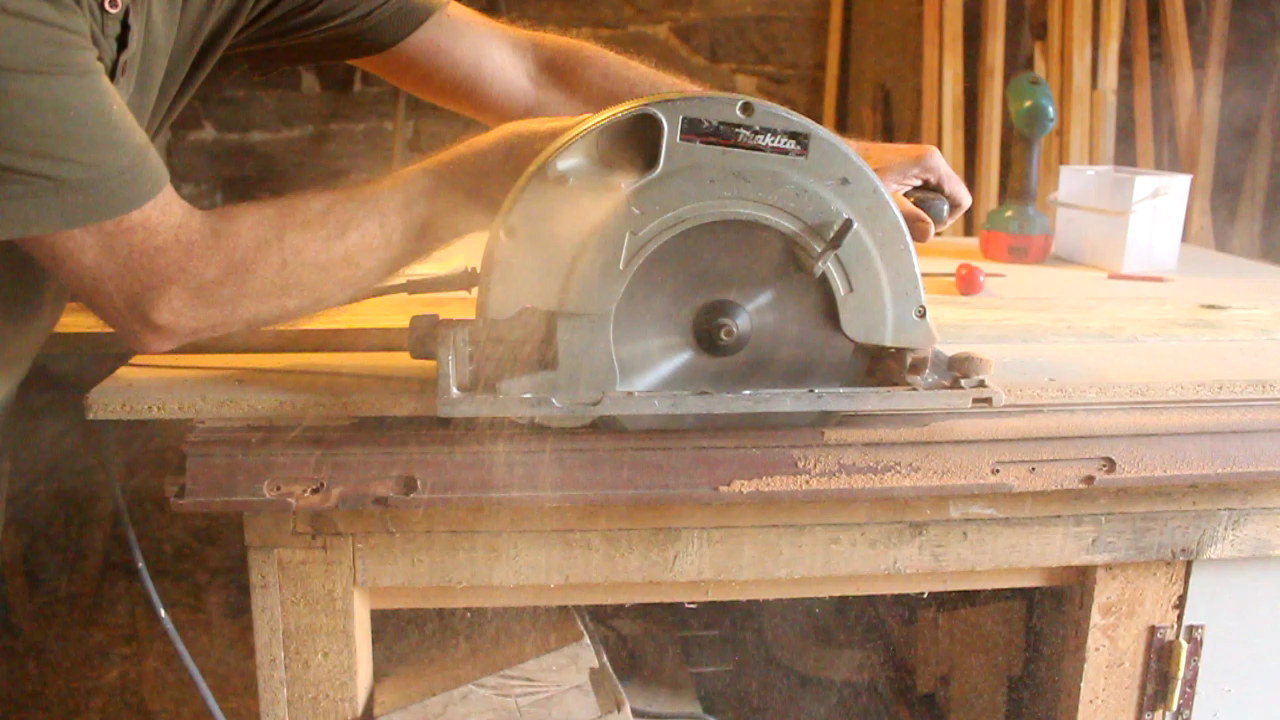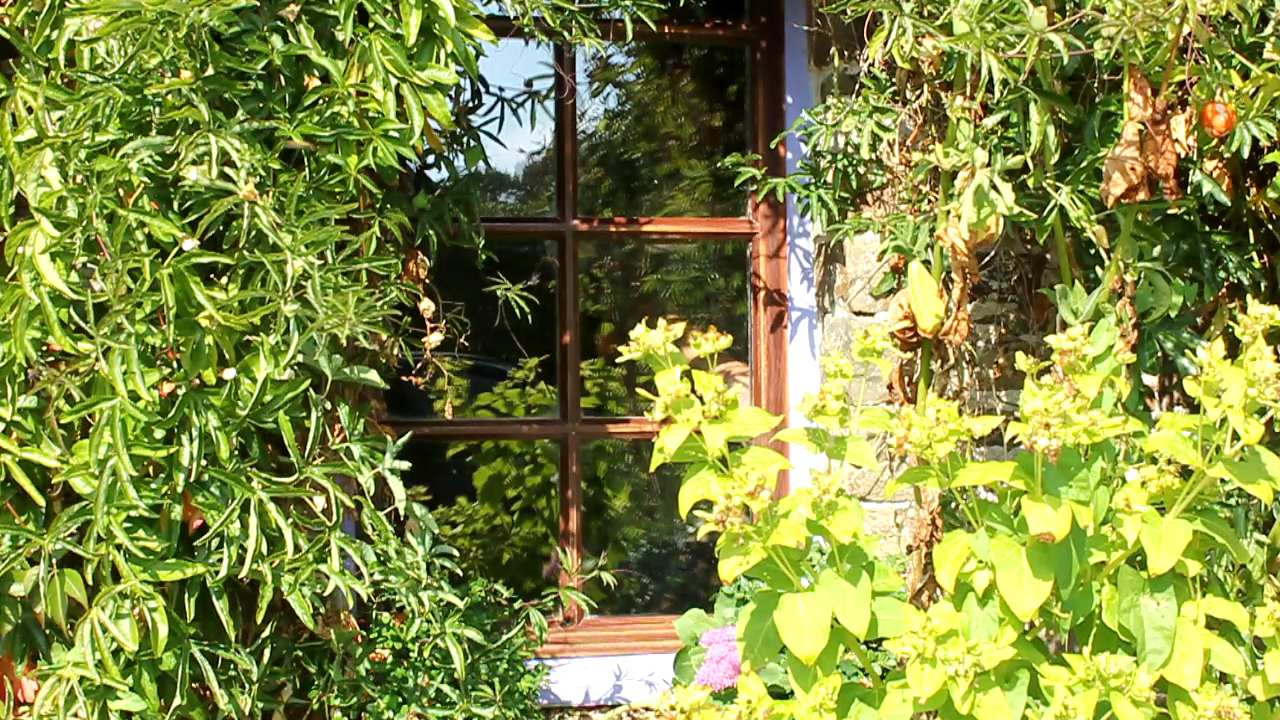Now that the machine was stripped of the superfluous bits I could start to get it ready for bicycle power. If you've just landed on this project then Part One can be found here.
Reusing the Brackets
Our old pedal-powered front loader had the drum held in place with wooden wedges bracing the drum against the walls of the machine. For this new machine I wanted something more robust. Therefore, the first stage was to modify the old brackets so that they could rigidly attach the drum to the front and rear walls of the machine. In the previous article I showed how I recuperated some very useful steel brackets from the concrete ballast weights. The original holes that were used to secure the weights to the drum could still be used for that purpose. I measured the distance from the drum mounting hole and the rear panel and bent the bracket to a right angle, such that the bent end of the bracket would rest against the wall panel of the machine.
Securing the Drum
Before I started to drill the 4 fixing holes in the front and rear panels/walls of the machine, I wanted to ensure that the drum which was now supported entirely by four springs was sitting vertically in the machine. By putting the machine on a pallet and packing under the support feet, I could determine with a spirit level that the machine was vertical and thus the drum axis was horizontal and was not twisting on the springs. This meant that once rigidly attached to the supporting walls the forces from the drum would not be anything except the drum's own weight i.e. there would be little or no twisting force which could ultimately distort the wall panels.
I secured the first bracket to the lower hole in the drum (there were two upper and two lower holes on each side of the drum to hold the ballast weights) and measured the position for the fixing hole on the wall panel. This position was transferred to the outside face of the panel so that I could drill a pilot hole followed by the bolt clearance hole. Next, I used a marker pen through the clearance hole to mark the face of the bracket. The bracket was then removed from the drum and the hole for the anchoring bolt was drilled in it. The bracket was bolted back onto the drum and the first anchoring bolt was put in and tightened so that already the drum was unable to move. The three other brackets were similarly attached and their mounting holes drilled and secured to the wall panels. It was interesting to note that the machine was feeling rigid once more because the drum was now acting as part of the structure.
Fitting the Chainwheel Mounting Block

 The chainwheel which was taken from the first bicycle washing machine was to be attached to the face of the drum shaft pulley. I needed the chainwheel to be offset from the pulley face so that with the sidewall in place the chainwheel would be on the outside of the machine body.
The chainwheel which was taken from the first bicycle washing machine was to be attached to the face of the drum shaft pulley. I needed the chainwheel to be offset from the pulley face so that with the sidewall in place the chainwheel would be on the outside of the machine body.I determined I needed an offset of 1" (25mm) and cut a square from a suitable piece of pallet wood. The block was to be screwed to the pulley and to attach the whole to the drum shaft I needed to drill a clearance hole for the socket that would be used when fitting the chainwheel.
When I laid the block onto the pulley I noticed a slight rocking and determined this arose from some casting marks on the pulley face. I remedied this with a flat file. The holes for the screws were drilled in the three pulley wheel spokes. For added security I put two screws in each spoke. The block was held to the pulley face with some strong spring clamps and was then screwed. I kept checking the block position because initially. it did shift a little. Once attached I decided to cut the block to a rough octagon instead of a square as this would mean a smaller hole would be needed to be cut in the side panel.
Finally, I cut the spokes that extended beyond the block perimeter as the pulley would now be superfluous. In the attached video I highlighted an error in my technique in that I should have kept the pulley in one piece so that I could attach the chainwheel as concentrically as possible by measuring its perimeter to the pulley perimeter. As you will see I did hit upon another solution to this by attaching the block to the axle and by rotating the drum, drew concentric circles on the block face. These circles would aid in fitting the chainwheel as centrally as possible on the block. Once I had aligned the chainwheel to these circles I screwed it to the block. By fixing the assembly to the axle I could check how centrally I'd attached the wheel simply by spinning the drum and looking for any eccentricity.
Chainwheel Assembly to the Machine
I next cut the hole in the side panel to enable the fitting of the block. I measured the drum axle centre distance from the washing machine frame and transferred this position onto the panel. I scribed a circle centred on this position to the clearance diameter of the block and used a jigsaw with a metal cutting blade to cut the hole.
Once I'd de-burred the hole edges I refitted the panel to the machine and attached the block to the axle.
Finally, to complete this stage of the project I attached the other side panel to the machine. I was now ready to start assembling the machine and bicycle onto the pallet.
Here's the film of this part of the process:
If
you have enjoyed this article and found it interesting then share it
with your friends on social media or suchlike. Please also feel free to
ask questions and or make comments and if you found this helpful and would like to support this site you can always 
Until next time and from a sunny day in Normandie,
Cheers, Andy
© Andy Colley 2019
RELATED ARTICLES
 Converting Your Washing Machine to Pedal Power Part 4
Converting Your Washing Machine to Pedal Power Part 4
It was now time to mount the machine and the bicycle onto the pallet. I
was planning to make new supports for the bicycle out of wood, my idea
being not everyone has access to a welder, which was how I'd made the
original..read more
 Convert Your Washing Machine to Pedal Power Part 1 - Getting Started (Top-Loader)
Convert Your Washing Machine to Pedal Power Part 1 - Getting Started (Top-Loader)
The
most frequent reasons for machine failure is of an electrical or
electronic nature. Neither of these preclude using it, as long as the
drum is watertight. Even if you don't already own a broken machine I can
guarantee...read more
 How to Convert your Washing Machine to Pedal Power 1 - The Basic Model (Front-Loader)
How to Convert your Washing Machine to Pedal Power 1 - The Basic Model (Front-Loader)
The electronic fault that arose in our automatic washing machine
rendered it useless. I knew that the machine was watertight and...read more
 How to Convert your Washing Machine to Pedal Power 2 - Modifications (Front-Loader)
How to Convert your Washing Machine to Pedal Power 2 - Modifications (Front-Loader)
We’ve exhibited this machine on many occasions and the most frequent
comment from spectators has been ‘let’s see you spin dry now!’...read more












































